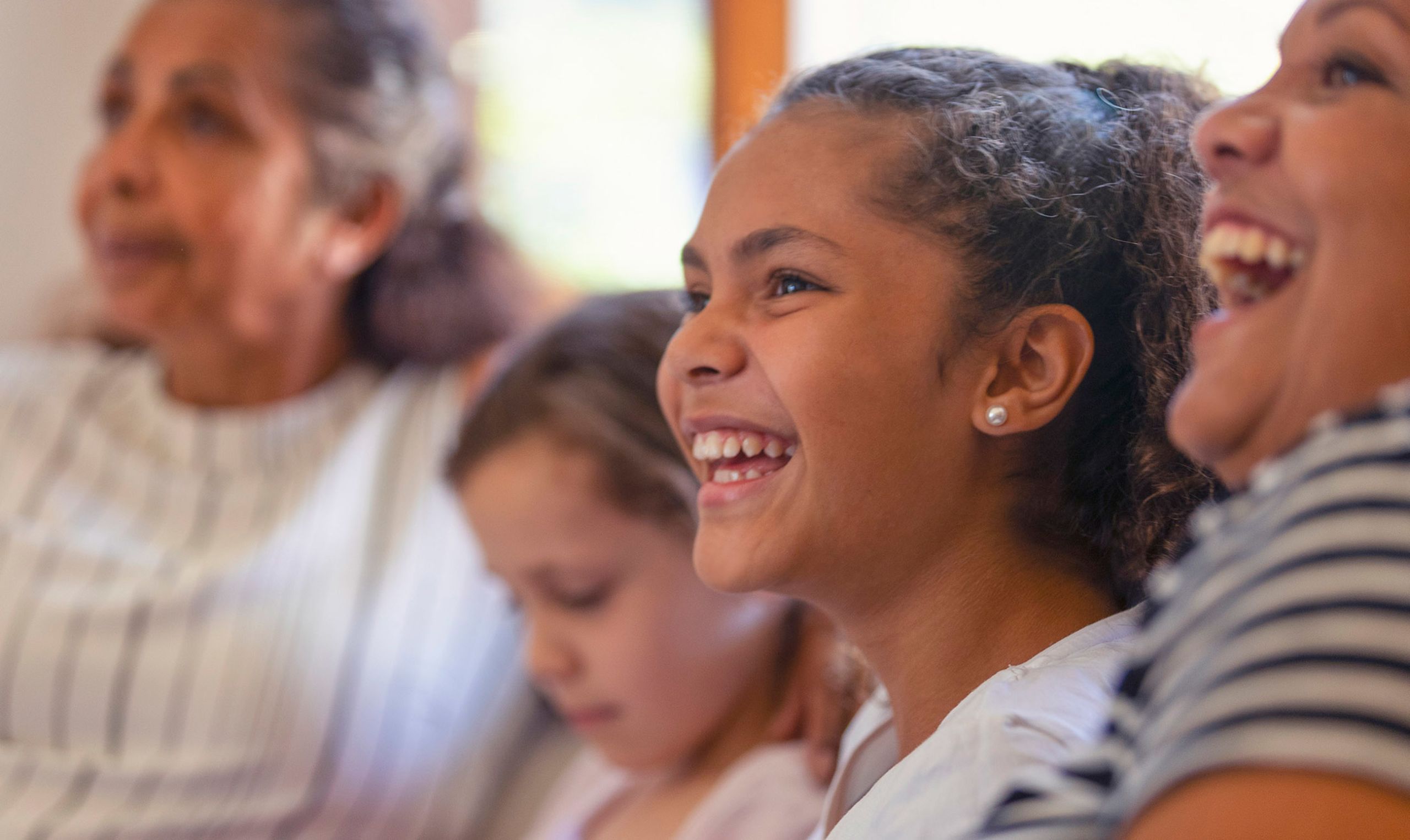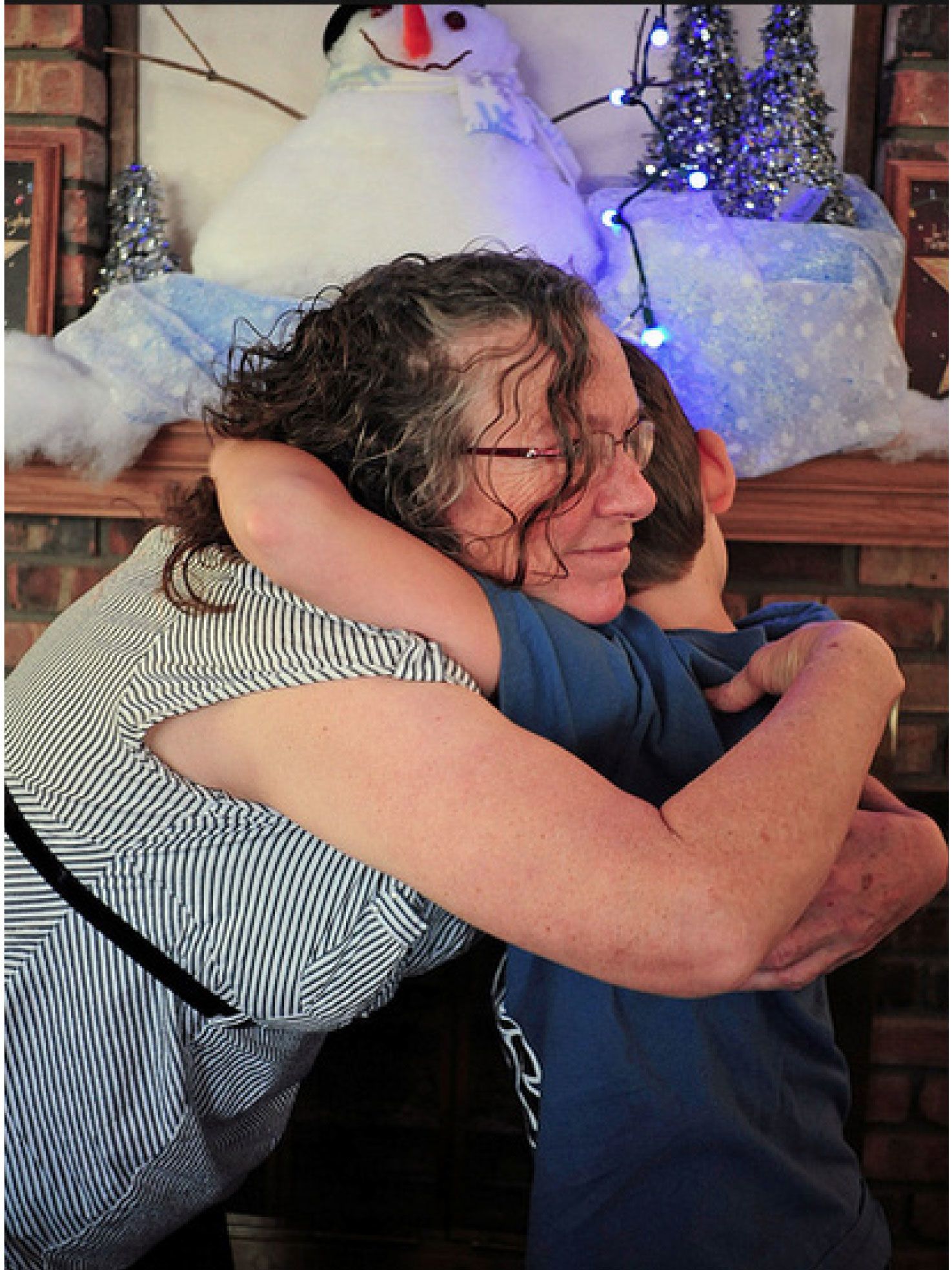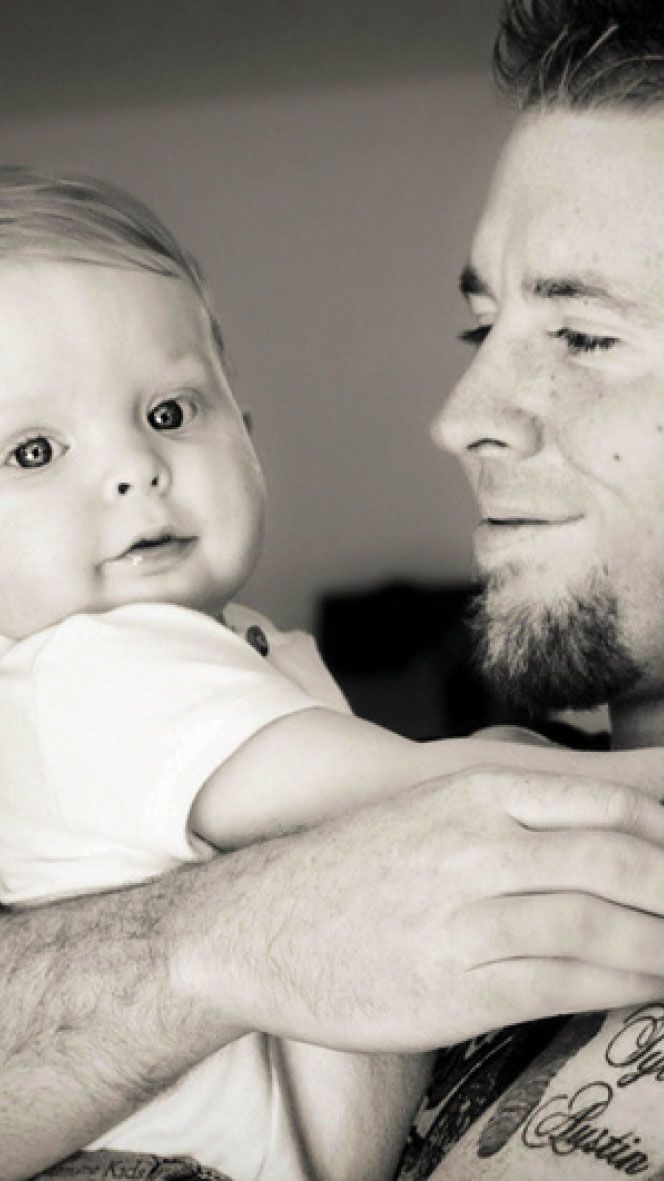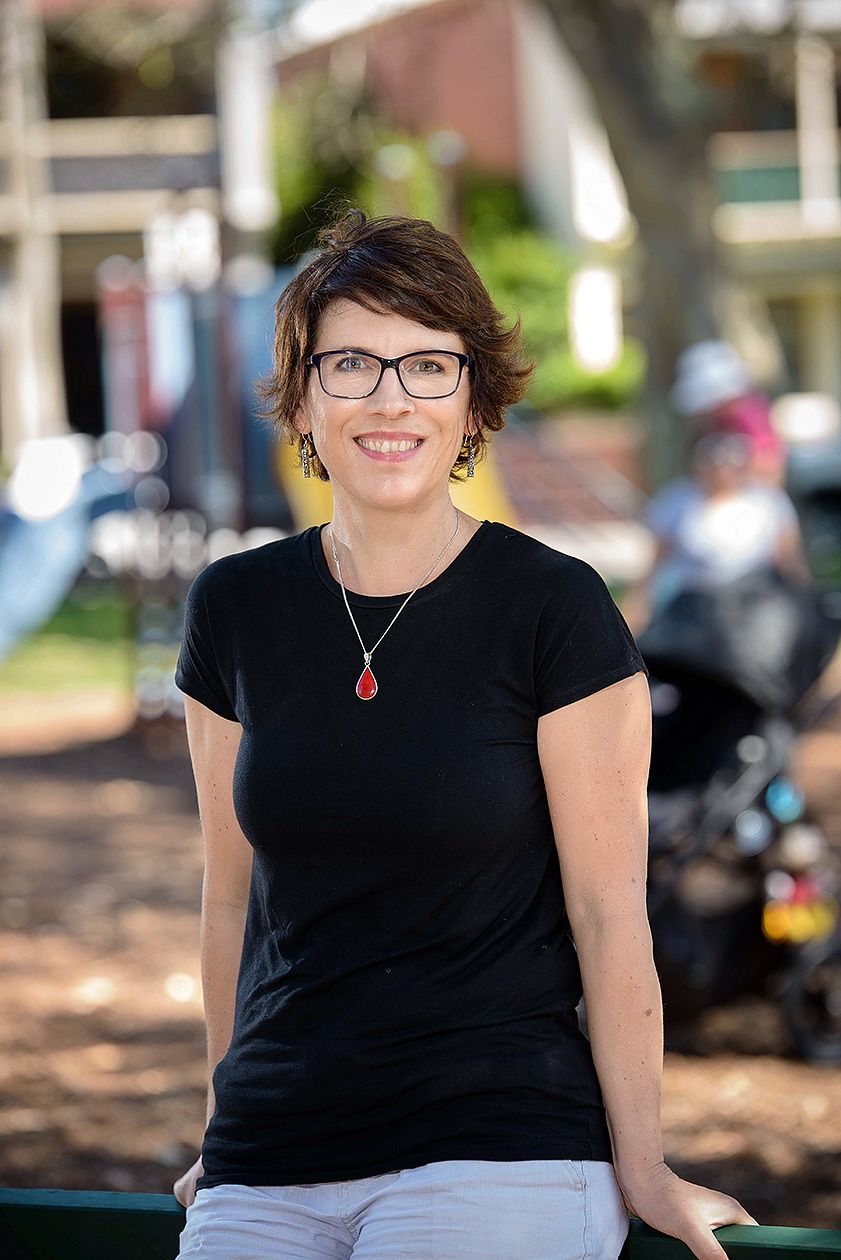Peer Parent and Family Advocacy in Child Protection
A pathway to better outcomes for kids

New York City used to have very high rates of children living in out-of-home care. Now, it has less than half the rate of Australia. Peer parent and family advocates were central to reforms that led to this success and are now embedded in the system. Here's how Australia can do the same …
Despite a clear policy intent for child removal and out-of-home care to be a last resort, more than 45,000 children currently living in these arrangements.1 All Australian governments agree this is a pressing social and economic problem.
In Australia, governments have relied on tertiary responses such as investigations, child removal and out-of-home care to protect children from abuse and neglect. These responses tend to exclude the people who are usually children's protectors—families. This is also an expensive approach. Around 90% of government spending in child protection goes to these tertiary processes. Around 60% goes to out-of-home care alone.2 Family preservation and reunification remain poorly resourced, receiving only around 8% of funding. Reunification rates in Australia are consequently low at around 25% for all children and even lower, at 19%, for Aboriginal and Torres Strait Islander children.3 For newborns, this may be as low as 7%.4 As a result, children may be removed without adequate preventative efforts and needlessly spend long periods in care, separated from crucial family relationships.
It is increasingly recognised that families need to participate in child protection practice and processes if intervention to keep children safe is to succeed.
Governments have tried to achieve this in two main ways. First, through the development of relationship-based practice frameworks, encouraging caseworkers to form respectful partnerships with families. Second, through regulations and legislative instruments such as the Aboriginal and Torres Strait Islander Child Placement Principle. These strategies have been insufficient. They have failed to address the relative powerlessness of parents and families in the child protection system and the underlying causes of child abuse and neglect.
"Involving parents is not just a matter of justice. Nor is it about sympathy or a desire to be nice to parents … it is a critically important thing to do in order to help kids." — Director of Special Child Welfare Advisory Panel, New York City.5
For family preservation and reunification to become the focus of our child protection systems, families need to maintain and strengthen their relationships with their children and to participate in child protection processes. Because current intervention is primarily based on coercion rather than a partnership approach, parents are relatively powerless in their interactions with child protection authorities. This powerlessness inevitably decreases their participation in child protection processes.
Photo: Getty Images / courtneyk & iStock

Around 80% of substantiated child maltreatment in Australia is concerned with psychological harm or neglect. These maltreatment types are associated with family violence, poverty, homelessness, parental ill health and other social and public health issues.6 They are rarely the result of parental deficits alone.
However, negative attitudes to parents and family with children in care still prevail. They are reinforced when the media discusses cases of child murder or severe abuse by parents or other people close to children. Inquiry after inquiry has been triggered by these thankfully rare events. These inquiries have, over time, contributed to a risk averse system, geared to respond as if every child in the child protection system would otherwise have been killed or gravely harmed by their dangerous parents.
Even when separated as babies, children have important attachments to their families and need to strengthen these relationships. Research has found young people in and leaving care regularly seek out their families.7 It has also found that parents and family are excluded from children's lives and lack opportunities to reunify with them or stay involved when they remain in care.8
"I think the hardest thing with having [child] removed was—there was no support. There was no communication. There was nothing. Then trying to get communication happening was even worse. No one—because I already had another child in care—no one was prepared to look at my case at all." 9
Overall, Australian responses to child abuse and neglect minimise the protective and preventative role of parents, family and community. Policy and practice are developed on the assumption that the state can and will protect children from harm by taking power and control away from parents, family and the community. In fact, the opposite is true. Coercive government interventions have not made children safer. They have ignored underlying causes and fuelled distrust in child protection agencies, especially in Aboriginal and Torres Strait Islander communities.
My Churchill Fellowship explored the role parents and family themselves could play in building the conditions for family participation through family inclusive initiatives such as peer parent and family advocacy. Peer advocacy is emerging internationally as a practice and policy strategy that addresses power imbalances and underlying causes while also improving the relational focus in child protection agencies. My Fellowship explored peer advocacy initiatives primarily in the USA and Norway. Here, there is evidence that they improve participation, increase reunification and reduce children's time in care. They improve relationships between case workers and parents and help drive government policy. Peer parent and family advocacy is in the interests of children because children's interests cannot be decoupled from their family and community.
Photo from Unsplash / Annie Spratt

Peer parent and family advocacy—a family inclusive initiative
Peer parent and family advocates are parents and family members with lived experience of child protection intervention. They support, and advocate for, parents and family who are currently experiencing that intervention. Peers are uniquely placed to help parents and families and to drive more equitable and child focused practice in the broader system (Fig 1). Owing to their shared experience, they can quickly form trusting relationships with family members. Through role modelling and their lived experience, they become credible messengers to and for parents and family. They provide valuable insight to child welfare professionals who rarely share the life experiences of their clients.

Figure 1. Peer Parent Advocacy—reducing power imbalances, building trust. Schematic by J. Cocks and J. Yarnold
Figure 1. Peer Parent Advocacy—reducing power imbalances, building trust. Schematic by J. Cocks and J. Yarnold
Peer parent advocates challenge negative stereotypes of parents through their presence in child welfare workplaces. Peer parent and family advocacy aims to increase the participation of parents and family at all levels of the child protection system: in casework, program design and management, workforce development and policy.
In 1992, New York City had around 45,000 children in out-of-home care.11 In 2020, it has under 8,000.12 For comparison, New York City's population is around 8.5 million, somewhat larger than Australia's largest state, New South Wales, which currently has an out-of-home care population of around 17,000.13
Since the 1990s, New York City has embedded peer advocacy throughout its child protection system in multiple agencies and processes.
Peer advocates support families in safety planning processes, run group processes and workshops, support children and families to spend time together, train carers and staff and provide policy advice to government. Parent and family advocacy at a policy level is occurring throughout the USA and Norway (case studies 1 and 2). While challenges remain, parents and family are now recognised stakeholders in Norway and the USA, along with professionals, carers and children themselves. Through these initiatives, government has created space for parent, family and community inclusion and participation in casework decisions, in service delivery and at a systems level.
Case study 1: Interdisciplinary legal services (ILSs) specialising in representing parents and family — New York City, USA
ILSs are just one component of the child protection system in New York City that has integrated peer advocacy. These services exist in various parts of the United States and are supported by government and non-government stakeholders. I visited two ILSs in New York City which have recently been evaluated:14 The Centre for Family Representation in Manhattan and the Bronx Defenders Office.
Parents are referred to their local ILS when facing child protection proceedings in the New York City Family Court. Each parent has a lawyer, a social worker, and a peer advocate on their team. This multi-disciplinary team assists them in legal proceedings, in interactions with out-of-home care agencies, in family visits and in sourcing appropriate help to reunify with their children.
Peer advocates undertake roles such as accompanying parents to services, providing advice and advocacy on case planning, running groups that connect parents together and providing practical assistance. Peer advocates use lived experience to form trusting relationships with parents and family which then assist them to effectively instruct their lawyers, navigate power imbalances with caseworkers and focus on getting their children safely home. By addressing the power imbalances that parents face and ensuring that multiple perspectives are heard, there are increased opportunities for caseworkers to do relational work with families.
"… The Bronx Defenders Office and the Centre for Family Representation (where peer advocates work with lawyers and social workers) has been of assistance to families and has improved outcomes for all parties. Parents have difficulties trusting child welfare authorities and strong support and advocacy (for parents) has helped build trust and engagement."— Eric Brettschnieder, First Deputy Commissioner, Administration for Children's Services, New York City.15
A mixed methods study involving 20,000 children found that the ILS model improved outcomes for NYC children.16 Reunification rates were 65% and children, on average, experienced 180 fewer days in care than children whose families were not represented by an ILS. This initiative, focused on enabling family participation, is well targeted to address the policy priorities in Australian child protection systems.

Photo from Jessica Cocks (2014). See ref 17.
Photo from Jessica Cocks (2014). See ref 17.

Photo from Jessica Cocks (2014). Ref 10
Photo from Jessica Cocks (2014). Ref 10
Case study 2: Parents participating in policy and program development — Norway
In Norway, the voices of parents and family are central to the policy process through the establishment of the Organisasjon for Barnevernsforeldre (OBF), a national peak body representing parents with children in care. Along with other stakeholder groups representing children, agencies and foster carers, the OBF meets regularly with the Norwegian Minister for Family Services and government officials to provide advice on policy and practice in Norway.
The OBF is led by parents with lived experience of child removal. It undertakes consultation with parents and family, modelling parent participation to the community and to the child welfare sector. As a result of advocacy by the OBF, group and individual services are now being offered specifically to parents with children in care by Bufetat—the universal Norwegian family counselling service. The OBF has partnered with VID University in Oslo to explore how parents experience child removal and placement, as well as how they experience the support provided to them by Bufetat.
Policy recommendations
Despite success overseas, peer parent and family advocacy remains almost entirely absent from Australian child protection systems. The green shoot initiatives that are emerging are new and vulnerable. However, implementation more broadly is very achievable if properly supported. Peer advocacy can be readily integrated into our system, is cost effective and will make a significant and long lasting difference.
1. Peer parent and family policy advocacy
Building on the Queensland Parent Advisory Committee (QPAC), all Australian governments should set up family advisory committees to advise on child protection policy and practice. Aboriginal and Torres Strait Islander participation in these committees is crucial.
2. Peer parent and family casework and systems advocacy
Child protection authorities and non-government organisations should partner with parent and family led organisations to trial and evaluate peer parent and family advocacy initiatives in all child settings and processes, such as safety planning, children's placements, family visiting and staff training. It is particularly recommended that interdisciplinary legal services, based on the New York City model, be trialled given the strong evidence on reunification and stays in care.
Green shoots of peer parent and family advocacy in Australia. A pilot project funded by the NSW Law and Justice Foundation provides peer court support in the Children's Court in Newcastle, NSW. The team also runs groups and has developed a series of information resources. The first of its kind in Australia, the project is a partnership between the University of Newcastle, Family Inclusion Strategies in the Hunter Inc (FISH) and Life Without Barriers. It has been supported widely in the sector. Along with parents themselves, lawyers and caseworkers find peer court support valuable as peers help parents to process emotions and navigate the court process. www.finclusionh.org
QPAC, established in 2020, is run by the Family Inclusion Network of South East Queensland. An Australia first, the QPAC is made up of parents and family with lived experience of the child protection and family support system. It meets regularly with the Minister for Child Safety to help ensure the voices of parents and family in Queensland are being heard at the policy level. www.finseq.org.au/
Stakeholder consultation
All stakeholders recognise the barriers to relationship-based practice in child protection that are beyond the reach of even the most skilled practitioners. Peer parent and family advocacy is a practical way to address these barriers and challenge stereotypes of parents and families with children at risk. They increase family inclusion and participation in child protection practices and processes, in the interests of all Australian children. Because of this, there is growing support for peer parent and family advocacy services in government departments, in universities and in the non-government sector. In New South Wales, the Family is Culture report has recommended that family advocacy be integrated into the NSW child protection system.18 Other stakeholders include Children's Commissioners and Guardians, Legal Service Commissions, Aboriginal and Torres Strait Islander Legal Services and peak bodies. There is a growing family inclusion movement in Australia characterised by parent and family involvement and leadership, with a focus on children's rights. These organisations are key stakeholders and are the leaders in developing peer parent and family advocacy in Australia.19
Acknowledgments
I acknowledge the support of Professor Clare Tilbury from Griffith University and Associate Professor Nicola Ross from the University of Newcastle who acted as peer reviewers for this article, and to Dr David Tobis of Maestral International. I also acknowledge Family Inclusion Strategies in the Hunter Inc and Grandmothers Against Removals NSW who, along with family inclusion colleagues in other states and territories, are helping to make peer parent and family advocacy a reality in Australia. Any errors or omissions are my own.
Published 12 February 2021

Jessica Cocks is a social worker and researcher in child and family practice. She is practice lead for children and families at Life Without Barriers. Jessica is co-founder of Family Inclusion Strategies in the Hunter and has published and presented widely on the importance of family inclusion in the child protection system, in the interests of children. She completed a Churchill Fellowship in 2016 to research family inclusion and partnership programs and initiative in child welfare.20 Read more about Jessica Cocks and her Churchill Fellowship.
References and Endnotes
1. Australian Institute of Health and Welfare (AIHW). "Permanency," in Child Protection Australia 2018–19. Canberra: AIHW, 2020, 72.
2. Productivity Commission. "Section 16, Child Protection Services," Annual Report on Government Services, Part 5, Community Services, Canberra: Australian Government, 2020. https://pc.gov.au/research/ongoing/report-on-government-services
3. AIHW, ‘Permanency,’ 71.
4. Marsh, C, Browne, J, Taylor, J, and Davis, D. "Characteristics and outcomes of newborns who entered into care (EIC) within 7 days of birth in NSW, Australia." Children and Youth Services Review, 81 (2017), 261–267.
5. Tobis, D. From Pariahs to Partners. How parents and their allies changed New York City's child welfare system. New York: Oxford University Press, 2012, 64.
6. AIHW, ‘Permanency,’ 72.
7. Mendes, P, Johnson, G, and Moslehuddin, B. "Young people transitioning from out-of-home care and relationships with family of origin: an examination of three recent Australian studies", Child Care in Practice, 18, 4 (2012), 357–370.
8. Ross, N, Cocks, J, Johnston, L and Stoker, L. 'No voice, no opinion, nothing': Parent experiences when children are removed and placed in care. Newcastle: Life Without Barriers and the University of Newcastle, 2017.
9. Ross, et al. 'No voice, no opinion, nothing',
[De-identifed data collected from this research and not previously published. Author (Cocks, J) was on the research team].
10. Cocks, J. Building Better Relationships – Family Inclusion Strategies Hunter. Outcomes of the Family Inclusion Practice Forum held on 18 July 2014. Callaghan NSW: The Family Action Centre, University of Newcastle, 2014.
11. Tobis, ‘From Pariahs to Partners’, 21.
12. Administration for Children's Services. "NYC Children – Snapshot of Children receiving ACS Services," City of New York, 2020, accessed 22 August 2020: https://www1.nyc.gov/site/acs/about/data-policy.page.
13. AIHW. "Out-of-Home Care," in Child Protection Australia 2018–19. Canberra: AIHW, 2020, 48.
14. Gerber, L, Pang, Y, Ross, T, Guggenheim, M, Pecora, and Miller, J. "Effects of an interdisciplinary approach to parental representation in child welfare." Children and Youth Services Review, 102 (2019), 42–55.
15. Cocks, J. "Family Inclusive Practice in child welfare: report of a Churchill Fellowship study tour", Children Australia, 44 (2019), 202–211.
16. Gerber, et al. ‘Effects of an interdisciplinary approach’, 32.
17. Cocks, ‘Building Better Relationships’.
18. Davis, M. Family is Culture: Independent review of Aboriginal Children in OOHC. Sydney: Family Is Culture, 2019. https://familyisculture.nsw.gov.au/. The Family is Culture Review is an independent review of Aboriginal and Torres Strait Islander children in out-of-home care ... in New South Wales, conducted by Professor Megan Davis. The review consulted widely in the NSW community and undertook a detailed review of the circumstances of 1,144 Aboriginal children who entered care between 1 July 2015 and 30 June 2016. Recommendation 27 of this report is about parent and family advocacy.
19. Family inclusion organisations are in some states and territories. They include but are not limited to: Family Inclusion Network of WA, Family Inclusion Network of Victoria, Family Inclusion Strategies in the Hunter (Newcastle, NSW), Family Inclusion Network of NSW, Family Inclusion Network of SE QLD and Family Inclusion Network of North QLD (Townsville). There are also Aboriginal and Torres Strait Islander family advocacy organisations such as Grandmothers Against Removals NSW and Sovereign Grannies.
20. Cocks, J. “If a community values its children, it must cherish their parents”: Family inclusion initiatives in child welfare. Churchill Fellowship Report: The Winston Churchill Memorial Trust, 2018. https://www.churchilltrust.com.au/fellow/jessica-cocks-nsw-2016.

